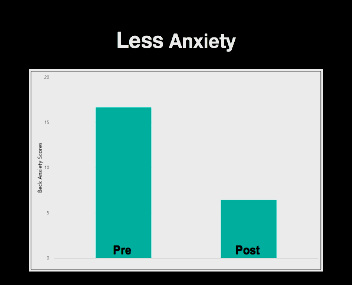Notes/Sources
(1) Swami Satyananda Sraswati
(2) Natl Med J India. 2021 May-Jun;34(3):143-150. doi: 10.25259/NMJI_63_19.Yoga Nidra practice shows improvement in sleep in patients with chronic insomnia: A randomized controlled trial. Datta K(1), Tripathi M(1), Verma M(2), Masiwal D(2), Mallick HN(3).Author information:(1)Department of Neurology, All India Institute of Medical Sciences, Ansari Nagar, New Delhi, India.(2)Department of Sports Medicine, Armed Forces Medical College, Pune, Maharashtra, India.(3)Department of Physiology, All India Institute of Medical Sciences, Ansari Nagar, New Delhi, India.
(3) Int J Yoga Therap. 2021 Jan 1;31(1):Article_20. doi: 10.17761/2021-D-20-00004. A Closer Look at Yoga Nidra: Sleep Lab Protocol. Sharpe E(1), Lacombe A(2), Butler MP(3), Hanes D(4), Bradley R(5). Author information:(1)National University of Natural Medicine, Portland, Ore.; and State University of New York at Canton, Canton, N.Y. (2)National University of Natural Medicine, Portland, Ore.; and U.S. Department of Agriculture, Produce Microbiology Research Unit, Berkeley, Calif.(3)Oregon Health & Science University, Portland, Ore.(4)National University of Natural Medicine, Portland, Ore.(5)National University of Natural Medicine, Portland, Ore.; University of California, San Diego, La Jolla, Calif.; and Australian Research Centre in Complementary and Integrative Medicine, Faculty of Health, University of Technology Sydney, Ultimo, NSW, Australia.
(4) American Academy of Pediatrics, October 19, 2021
(5) Complement Ther Clin Pract. 2021 Nov;45:101462. doi:10.1016/j.ctcp.2021.101462. Epub 2021 Jul 29.Effectiveness of Yoga Nidra in reducing stress in school going adolescents: An experimental study. D'souza OL(1), Jose AE(2), Suresh S(3), Baliga MS(4).Author information:(1)Department of Psychiatric Nursing, Father Muller College of Nursing, Mangalore, Karnataka, 575002, India. Electronic address: ovine.dsouza@gmail.com.(2)Department of Psychiatric Nursing, Father Muller College of Nursing, Mangalore, Karnataka, 575002, India.(3)Department of Community Medicine, Father Muller Medical College Hospital, Mangalore, Karnataka, 575002, India. (4)Father Muller Medical Research Centre, Mangalore, Karnataka, 575002, India. Electronic address: msbaliga@gmail.com.
(6) Int J Yoga. 2018 Sep-Dec;11(3):245-248. doi: 10.4103/ijoy.IJOY_39_17.Effect of Yoga-nidra on Adolescents Well-being: A Mixed Method Study. Vaishnav BS(1), Vaishnav SB(2), Vaishnav VS(3), Varma JR(4).Author information:(1)Department of Medicine, Pramukhswami Medical College, Karamsad, Gujarat, India.(2)Department of Obstetrics and Gynaecology, Pramukhswami Medical College, Karamsad, Gujarat, India.(3)Department of Electronics, Sardar Patel University, Vallabh Vidyanagar, Gujarat, India.(4)Department of Psychiatry, Pramukhswami Medical College, Karamsad, Gujarat, India. CONTEXT: Adolescent well-being is a priority area for health-care interventions in the 21st century. Yoga-nidra is an ancient Indian method of enabling individuals to attain a positive state of deep physical, mental, and emotional relaxation. The practice produces a state of simultaneous relaxation and detachment resulting in inner awareness and release of stress on all planes of one's being.
(7 )Int J Yoga. 2018 Sep-Dec;11(3):245-248. doi: 10.4103/ijoy.IJOY_39_17. Effect of Yoga-nidra on Adolescents Well-being: A Mixed Method Study. Vaishnav BS(1), Vaishnav SB(2), Vaishnav VS(3), Varma JR(4). Author information:(1)Department of Medicine, Pramukhswami Medical College, Karamsad, Gujarat, India.(2)Department of Obstetrics and Gynaecology, Pramukhswami Medical College, Karamsad, Gujarat, India.(3)Department of Electronics, Sardar Patel University, Vallabh Vidyanagar, Gujarat, India.(4)Department of Psychiatry, Pramukhswami Medical College, Karamsad, Gujarat, India. CONTEXT: Adolescent well-being is a priority area for health-care interventions in the 21st century. Yoga-nidra is an ancient Indian method of enabling individuals to attain a positive state of deep physical, mental, and emotional relaxation. The practice produces a state of simultaneous relaxation and detachment resulting in inner awareness and release of stress on all planes of one's being.
(8) Complement Ther Clin Pract. 2017 Aug;28:4-8. doi: 10.1016/j.ctcp.2017.04.001. Epub 2017 Apr 4.Psychological effects of yoga nidra in women with menstrual disorders: A systematic review of randomized controlled trials.Kim SD(1).Author information: (1)Department of Nursing, College of Health Science, Kangwon National University: 346 Hwangjo-gil, Dogye-eup, Samcheok-si, Gangwon-do 245-907, Republic of Korea. Electronic address:nu11110@kangwon.ac.kr.DOI:10.1016/j.ctcp.2017.04.001
(9 ) Int J Yoga. 2012 Jan;5(1):52-6. doi: 10.4103/0973-6131.91715. Yoga Nidra as a complementary treatment of anxiety and depressive symptoms in patients with menstrual disorder. Rani K(1), Tiwari S, Singh U, Singh I, Srivastava N. Author information:(1)Department of Physiology, CSMMU, Uttar Pradesh, Lucknow, India.
(10) J Altern Complement Med. 2013 Dec;19(12):925-9. doi: 10.1089/acm.2010.0676. Epub 2013 May 6.Impact of Yoga Nidra on menstrual abnormalities in females of reproductive age.Rani M(1), Singh U, Agrawal GG, Natu SM, Kala S, Ghildiyal A, Srivastava N.Author information: (1)1 Department of Obstetrics and Gynecology, Chhatrapati Sahuji Maharaj Medical University , Uttar Pradesh, Lucknow, India .
(11) Int J Yoga Therap. 2011;(21):23-37. Transforming trauma: a qualitative feasibility study of integrative restoration (iRest) yoga Nidra on combat-related post-traumatic stress disorder. Stankovic L(1).Author information:(1)John F. Kennedy University, Pleasant Hill, CA, USA. irest108@gmail.com
(12) Int J Yoga Therap. 2014;24:53-62.Delivering Integrative Restoration-Yoga Nidra Meditation (iRest®) to Women with Sexual Trauma at a Veteran's Medical Center: A Pilot Study. Pence PG, Katz LS(1), Huffman C, Cojucar G.Author information:(1)9600 Veterans Drive SW, Tacoma, WA 98493.
(13) J Altern Complement Med. 2012 Oct;18(10):953-8. doi:10.1089/acm.2011.0331. Epub 2012 Aug 6. Yoga Nidra relaxation increases heart rate variability and is unaffected by a prior bout of Hatha yoga. Markil N(1), Whitehurst M, Jacobs PL, Zoeller RF. Author information:(1)Department of Exercise Science and Health Promotion, Florida Atlantic University, Boca Raton, FL, USA. The objective of this study was to compare the acute rate of HRV responses to YN relaxation alone vs. YN relaxation preceded by Hatha yoga.
(14) Diedre Fay














































